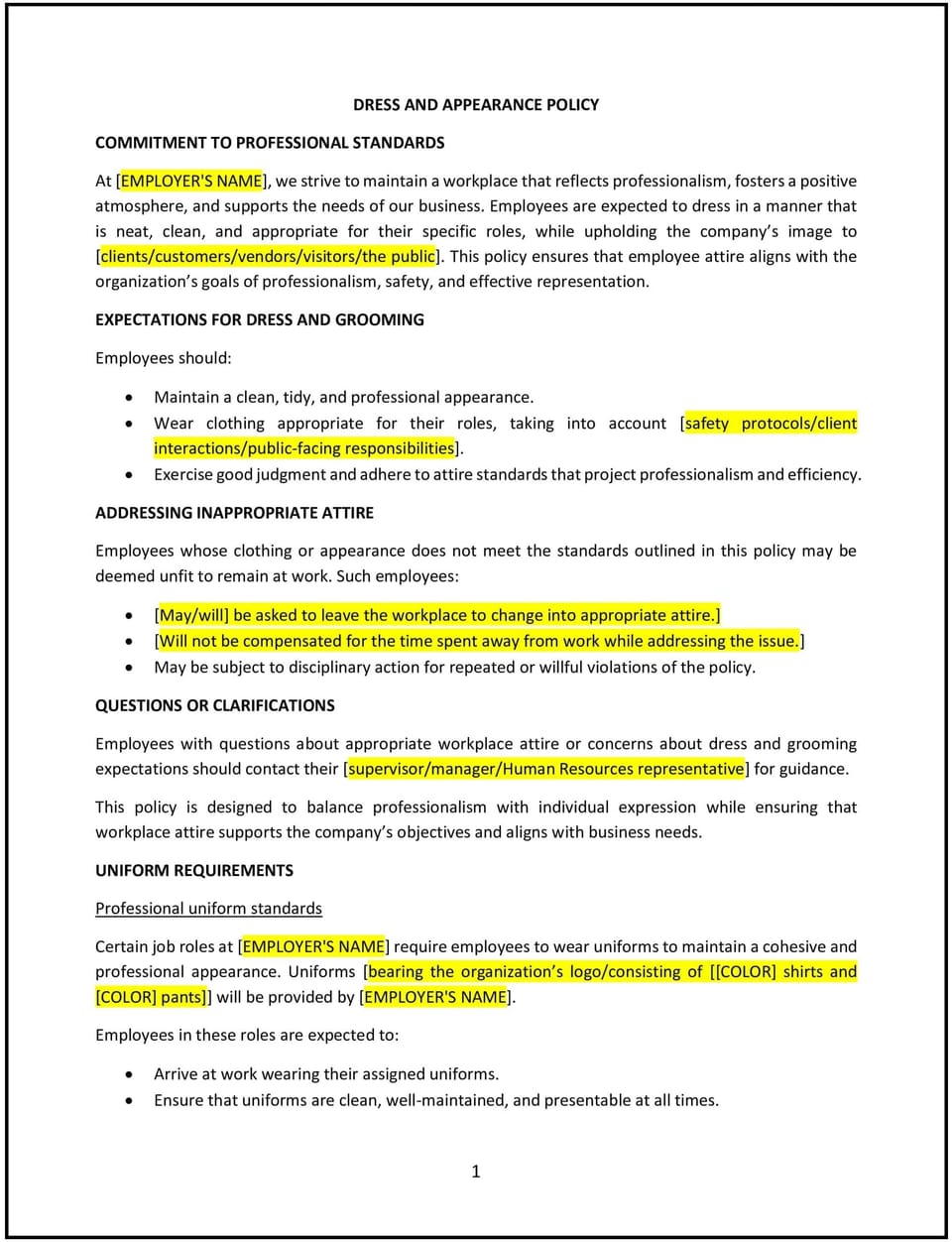Dress and appearance policy (North Dakota): Free template

Dress and appearance policy (North Dakota)
This dress and appearance policy is designed to help North Dakota businesses establish workplace dress codes that align with company culture, industry standards, and safety requirements. The policy outlines acceptable attire, grooming expectations, and enforcement procedures.
By implementing this policy, businesses can maintain a professional workplace environment while allowing appropriate flexibility.
How to use this dress and appearance policy (North Dakota)
- Define dress code expectations: Specify acceptable attire for different roles or departments.
- Address safety requirements: Require personal protective equipment (PPE) when applicable.
- Establish grooming and hygiene standards: Encourage neat and professional appearances.
- Allow for flexibility: Specify any casual or business-casual dress days.
- Accommodate religious and cultural attire: Ensure inclusivity in dress code policies.
- Clarify policy enforcement: Outline corrective actions for dress code violations.
- Review regularly: Update the policy based on industry trends and employee feedback.
Benefits of using this dress and appearance policy (North Dakota)
Implementing this policy provides several advantages for North Dakota businesses:
- Maintains a professional image: Ensures employees dress appropriately for the workplace.
- Enhances safety: Reduces workplace hazards with appropriate attire and PPE requirements.
- Promotes inclusivity: Allows religious and cultural dress accommodations.
- Prevents misunderstandings: Provides clear guidance on workplace attire expectations.
- Reflects North Dakota-specific considerations: Aligns with local industry and seasonal dress needs.
Tips for using this dress and appearance policy (North Dakota)
- Tailor dress codes by department: Ensure requirements match job duties and safety needs.
- Encourage reasonable flexibility: Allow casual dress when appropriate.
- Provide clear guidance on enforcement: Define steps for handling policy violations.
- Train managers on policy application: Ensure consistency in dress code enforcement.
- Adjust as needed: Update policies based on business needs and employee input.
Q: Can employees wear casual attire?
A: Businesses should specify when casual or business-casual dress is permitted.
Q: How should businesses handle dress code violations?
A: Businesses should outline corrective actions, such as verbal warnings or policy reminders.
Q: Are religious or cultural accommodations allowed?
A: Yes, businesses should ensure dress code policies respect religious and cultural attire.
Q: Can businesses require uniforms?
A: Businesses should clarify if specific roles require uniforms and how they are provided.
Q: How often should this policy be reviewed?
A: The policy should be reviewed annually or as needed based on workplace needs.
This article contains general legal information and does not contain legal advice. Cobrief is not a law firm or a substitute for an attorney or law firm. The law is complex and changes often. For legal advice, please ask a lawyer.


